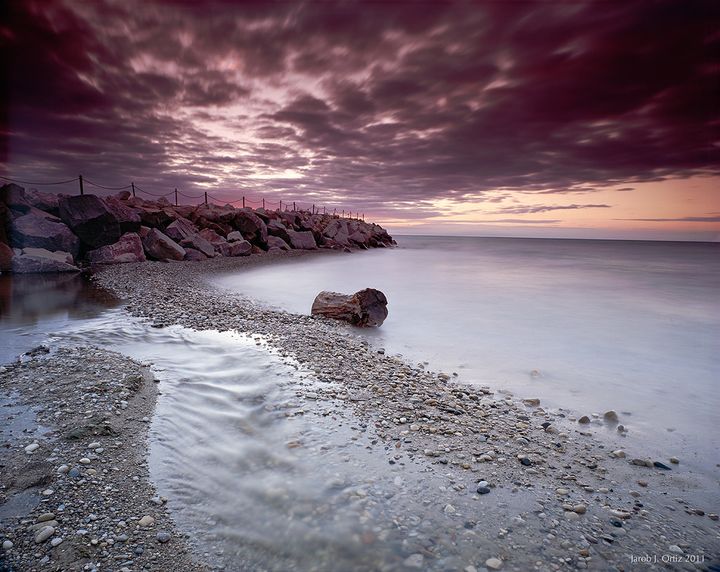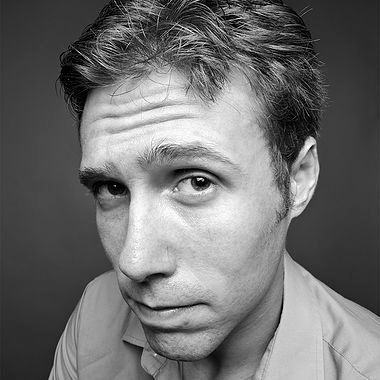
Jarob Ortiz is about to start his dream job. And let’s face it, if you’re a landscape photographer, it’s likely your dream job as well.
The Milwaukee native, who didn’t even get serious about photography until seven years ago, got the job that an untold number of photographers fantasized about ―to be the National Park Service’s “next Ansel Adams.”
On Monday morning, the same week that the National Park Service celebrates its Centennial, Ortiz, 33, will walk into its offices in Washington, D.C. and begin what he hopes is the last job he’ll ever hold.
“I have to be honest, I don’t ever want to leave this position,” Ortiz said. “I’ll stay there until they tell me I have to leave...until they tell me, ‘You’re too old dude.’ “

Considering that the last two photographers (neither of them Adams) who held this job, stayed about 40 years each, it’s probably not too far of a stretch that Ortiz could be there for the long haul.
While Adams’ legendary career spanned 60 years, he created some of his most iconic images while under contract with the Department of the Interior during the 1940s. And while there are many photographers who have worked for the National Park Service and Department of Interior, since Adams’ day, only two others ― Jet Lowe and Jack Boucher ― have held the same job as Ortiz, creating large format film images of important American locations for the Library of Congress’ official historical record.
It’s a job that Ortiz figured he had no chance of landing, considering the number of people who were applying for what was billed as Ansel Adams’ old job.
The truth, however, is that the job is more about photographing endangered buildings and structures than it is capturing majestic landscapes.
While many of the photographers who applied submitted portfolios filled wth stunning landscapes, it was Ortiz’s images of derelict and abandoned spaces in the midwest that helped him get the job. That and his deep descriptions of all the technical skills and know-how one needs to shoot large format film. That included a thorough understanding of the “zone system,” a somewhat complex system of calculating the correct exposure that Adams and a colleague developed, and which Adams made famous through his iconic work.

If you need a more detailed explanation of how the zone system works, you’ll have to consult the Googles or ask Ortiz because most of us who learned photography on DSLRs, with their automatic metering systems, or mirrorless cameras with their electronic viewfinders, have absolutely no clue.
But that raises the question of why in this day of 100 megapixel medium format digital cameras, the National Park Service insisted in its job posting that interested photographers would have to be experienced with large format film photography?
In fact, almost all of the images Ortiz will take will be with 4x5, 5x7 or 8x10 view cameras, the kind of “old-fashioned” cameras that have a bellows between the lens and film plate. It’s the same kind of gear that Adams lugged around to the Snake River and Half Dome.
One reason is that the film negatives won’t lie. They’ll represent how the location actually looked without the possibility of artistic license through digital post processing.
Another reason is because film creates a lasting, tangible record. Ortiz’s negatives and prints will be stored in the Library of Congress, right next to Lowe, Boucher and, yes, Adams.
The enormity of the job is still sinking in for Ortiz, who was born and raised in Milwaukee and didn’t start shooting with a purpose until 2009 when he bought an Olympus OM2 film camera for $52 on eBay. And the only reason he bought a film camera was because he couldn’t afford a DSLR.
If he’d had the money at the time, he concedes he probably would have gone digital and his life might have turned out completely different. Instead, he decided that he would learn everything he could about shooting film and do it like the legends that he admired, famed photographers such as Dorothea Lange and Walker Evans who photographed the heartland for the Farm Security Administration in the 30s and 40s.
Ortiz counts Adams as one of his heroes, as well. It was coming across Adams’ “The Tetons and Snake River” that inspired him to enroll in the Milwaukee Area Technical College to learn the craft of large format film photography.
At MATC, he wrote a paper describing his dream job. Ortiz wrote that he wanted to document historic architecture as way of preserving it for the permanent record.
He starts that job on Monday.
First up, is photographing Ellis Island. There’s also talk about an old dam that the park service wants photographed before winter sets in.
After that, Ortiz is not sure where this new adventure will take him.
“Being able to leave your mark on history is the ultimate goal in photography,” Ortiz said. “It’s hard for me to even put into words how I feel about having this opportunity.”
Joe Newman runs Focused Photo Adventures, which helps photographers arrange people-to-people experiences in Cuba, as well excursions to other locations

